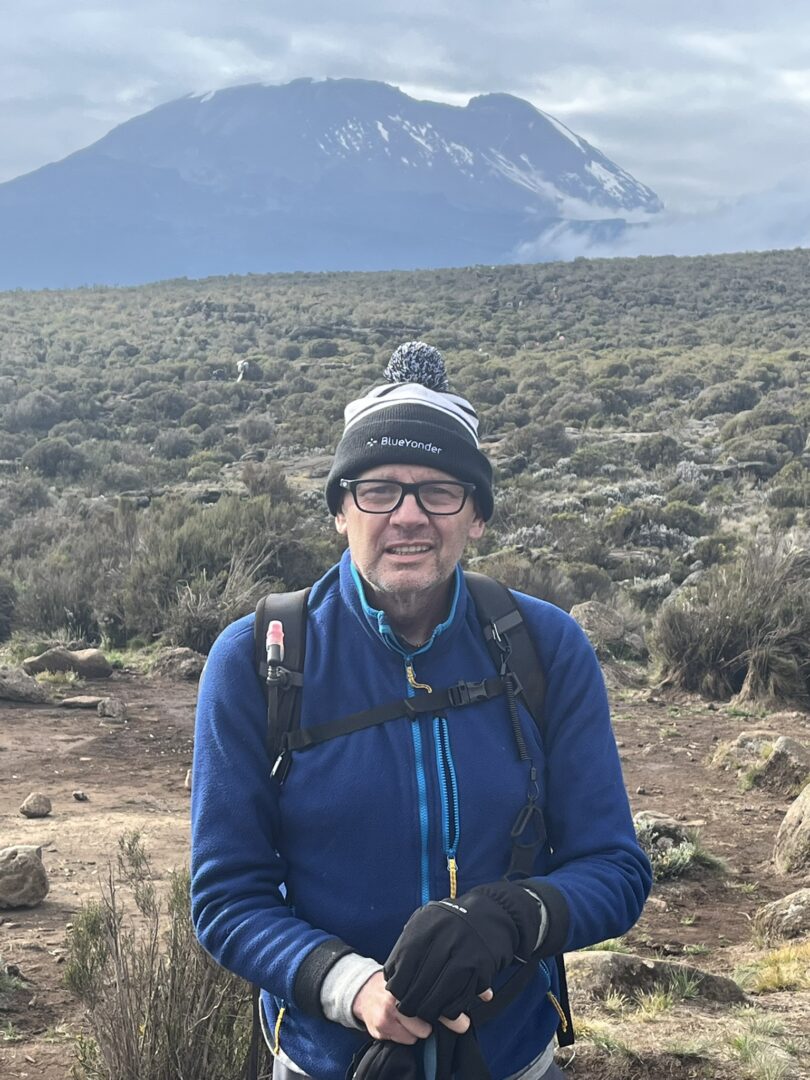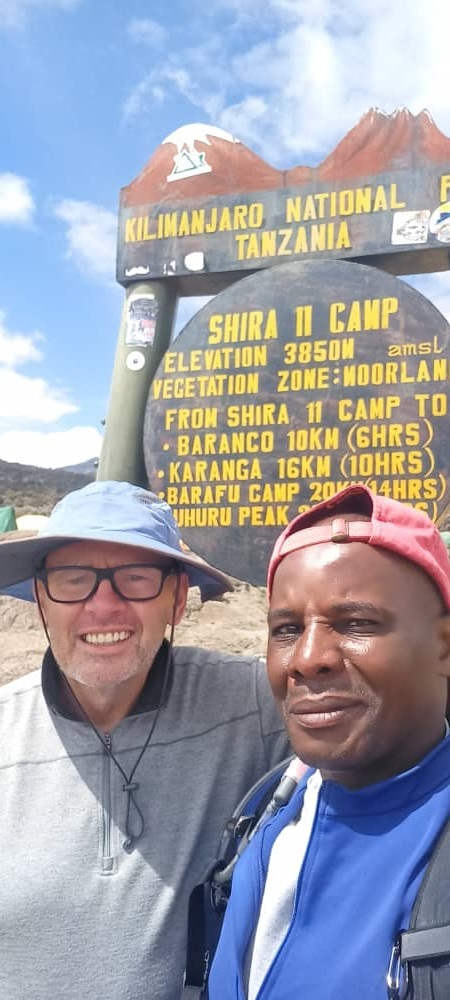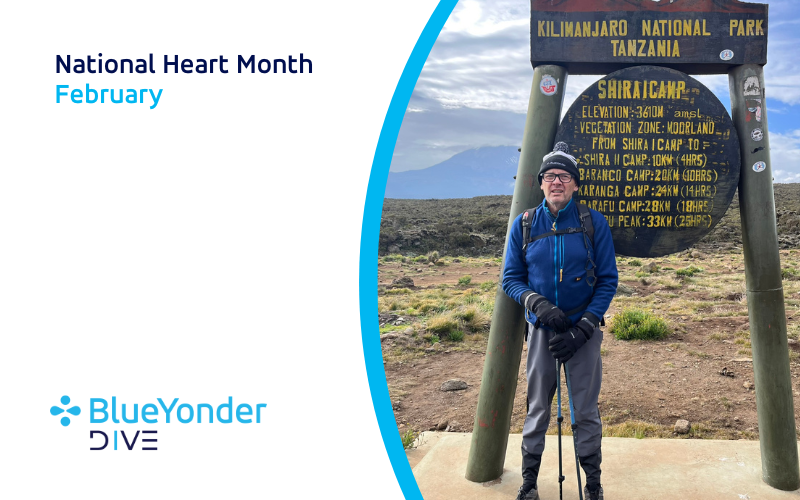Blue Yonder Associate Shares Heart Journey That Found Him at the Top of Mt. Kilimanjaro
February is National Heart Month. It’s a reminder not to take the most important organ inside the body for granted. According to the Centers for Disease Control and Prevention (CDC), heart disease is the leading cause of death for men, women, and people of most racial and ethnic groups in the U.S. In the U.S., someone has a heart attack every 40 seconds. In honor of the month and to raise awareness, Blue Yonder associate Jim Henderson shares his heart disease story.
Share a little about yourself and your role at Blue Yonder.
I live in Dallas and have been married to my wife, Margie, for 20 years. I’ve been with Blue Yonder for over two years and currently work as a Strategic Transformation Director in the Blue Yonder Global Professional Services team, supporting customer implementations and go-lives.
You are passionate about sharing your heart story. Can you tell us about it?
In October 2021, I had been with Blue Yonder for a few months and was visiting a customer. While there, I got really sick and thought maybe I had COVID-19 but tested negative. I kept getting worse, so I headed home and when I landed, my wife picked me up and took me straight to the emergency room. I’m glad she did as it took me over 45 minutes to get from the gate to the car when I landed, I was having a hard time breathing.
At the hospital, they tested me for COVID-19 and again I was negative but my chest was so congested that they couldn’t see anything in the X-rays, so they decided to admit me. Two days later, after further testing, they conducted an angiogram, which is a scan that shows blood flow through arteries, veins, or the heart and allows doctors to see any blockages. That’s when they told me I needed a triple bypass, which turned into a quadruple bypass. Unfortunately, they couldn’t do the surgery via stints, so they had to crack my chest open. I was in surgery for six-plus hours. I had come pretty close to death. .This was my second chance.
I was in the ICU for 10 days and then another five days in the hospital. While there, I had lost 50 pounds; I was already very thin, so this was a lot for me. After being sent home, I immediately started going to cardio rehab, where I went three days a week for the next three months. As part of my surgery, they took arteries out of my legs to replace the blocked one, so I lost a lot of muscle tissue. The nurses at the cardio rehab were my cardiac angels! They put me through quite a workout. For the first two months I could not lift more than 10 pounds as they don’t want anything to happen to your chest before it fully heals. Once I was done with my rehab, I got a trainer at the gym and kept at it.
The best thing to come out of my heart attack was that I was a Type 2 diabetic. After the surgery, I changed my diet drastically and was able to come off all diabetes medications. I am no longer classified as diabetic.

What inspired you to want to climb Mt. Kilimanjaro?
I had always thought about climbing Mt. Kilimanjaro, so after my heart attack, I set my sights on it! I continued to train and almost a year and a half later after the surgery I took the adventure of a lifetime.
Share your climbing adventure.
There is a lot of planning that goes into a trip like this. The first was finding a guided trekking company to do the climb with. I researched several companies and settled on one that I really liked. They help prepare you by giving you advice on how to prepare for the hike, what equipment you will need along with medications, and what to pack. I went to see my doctor to ensure I could do the trek and to get medication for malaria and altitude sickness. The nice thing is if you forget something they usually can provide it to you onsite. I ended forgetting one thing.
The day finally came and I hopped on a plane headed for Africa. The flight there is 25 hours total. I flew from Dallas to London to Doha to Kilimanjaro. When you land, it’s another three hours to get to the hotel, so by the time you get there you are exhausted.
The day of the hike, you wake up at 5 a.m. and get into the tour van that drives you another three hours to Tanzania National Park. The trek itself is more of a hike rather than actual mountaineering climb. You go over 40 kilometers (about 25 miles) in eight days. And it’s different terrain every day. There are two routes, and we took the longest route because it is a slower ascent, which helps you acclimate to the altitude better. The crazy part is you spend seven of those eight days going up and then one day to come back down. When you are going downhill everything is steep, so you have to be very careful.
Our guide was fantastic! He does this for a living and climbs Mt. Kilimanjaro regularly. On Day 3 of our trek, I got really bad altitude sickness. We were trekking about 10 hours each day so that day was hard. I was very slow, so it was dark and cold by the time I got to camp and I didn’t want to eat or drink, which happens with altitude sickness. But our guide forced me to eat and drink because he knew that’s what I needed. He got me through it!
I’m so glad I did the trek! The people of Tanzania are wonderful!

What is the one thing you hope our readers will take away from your story.
I would hope that they will take their heart health seriously and talk to their doctor about it, especially if they have family history. And don’t underestimate the power of exercise and eating healthy. I don’t think people realize how important your heart is. Illnesses with the heart can happen at any age.
I feel like a walking miracle and am very grateful. I’m a reminder that we all need to be healthy and we all need a way to get rid of stress in our lives.

